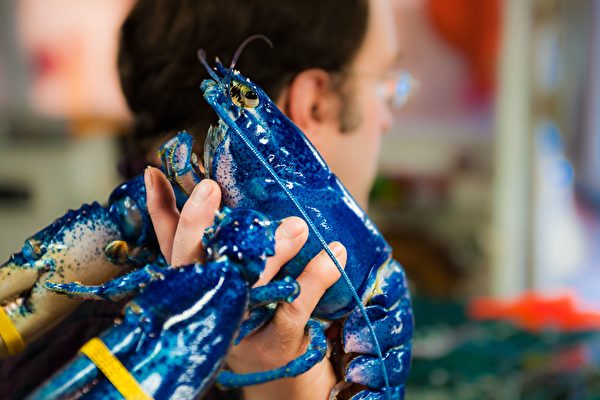Colorful lobsters in orange, blue, calico, bicolor, and even cotton candy hues? These vibrant hues were spotted in fishermen traps, supermarket seafood tanks, and scientist labs last year.
According to the Associated Press, these uniquely colored lobsters have caught the media’s attention, becoming prominent news headlines due to their rarity. Particularly, the uncommon light blue lobsters, described by some as “cotton candy colored,” are estimated to have a chance of occurrence as rare as one in a hundred million.
Recently, a wave of these peculiar-colored lobsters has appeared in Maine, New York, Colorado, and other regions. Scientists couldn’t help but wonder about the uniqueness of these color-changing creatures. As often occurs in the scientific world, it’s a complex matter.
Andrew Goode, the Chief Executive Scientist of Lobster Distribution Overview at the University of Maine, mentioned that lobster color variations can occur due to genetic and dietary differences, hence one should be cautious when estimating the rarity of certain colors. Scientists also mentioned that there is currently no precise information regarding the occurrence of abnormal lobster colors.
“Rumors say their taste doesn’t differ much,” Goode said.
Wild lobsters typically display a mottled brown color and turn into red-orange when cooked. Goode mentioned that abnormal lobster colors could be due to genetic mutations affecting the proteins that bind with shell pigments.
Markus Frederich, a marine science professor at the University of New England in Maine, explained that the probability of abnormal lobster colors is based on fisheries data. However, he noted, “Nobody really tracks them.”
Frederich and other scientists suggested that probability figures often quoted, such as one in a million for blue lobsters and one in thirty million for orange lobsters, should not be seen as definitive numbers.
Frederich is researching methods to extract genetic samples from lobsters to better understand the molecular basis of shell coloring. In his university lab, Frederich has collected some uniquely colored lobsters and has been tracking the development of the offspring of Peach, an orange lobster being raised at the university.
Peach has produced thousands of offspring this year, which is normal for lobsters. According to Frederich, about half of them are orange, which is not common. He mentioned that among the surviving young lobsters, over half were of normal colors.
Studying the DNA of atypical colored lobsters can help scientists gain a better understanding of genetics, Frederich stated.
“Lobsters are iconic animals of Maine, and I think they are beautiful. Especially when you see those rare lobsters, they look very striking. As a typical scientist would say, I wonder how this happens,” Frederich added.
Frederich admitted to eating lobsters but said, “I never eat those brightly colored ones.”
One of Frederich’s lobsters, named Tamarind, has one side of typical color and the other side orange. Frederich explained that this occurs when two lobster eggs fuse together, growing into one lobster. He mentioned that this situation is rare, only one in fifty million.
Recently, rare lobsters have become a hot topic in the news. Last month, an orange lobster was found at a Stop & Shop supermarket on Long Island in New York, while another lobster was shipped to a Red Lobster restaurant in Colorado in July.
Richard Wahle, a retired lobster research expert from the University of Maine, said that due to the vast scale of the American lobster industry, these uniquely looking lobsters will likely continue to come ashore. According to federal records, since 2009, American fishermen have been hauling over 90 million pounds (40,820 metric tons) of lobsters onshore each year, a quantity that had only been reached twice prior to 1950.
“Regarding the hundreds of millions of lobsters caught every year, it’s not surprising to see some strange lobsters, even if it’s a chance of one in a million or one in thirty million,” Wahle remarked.

